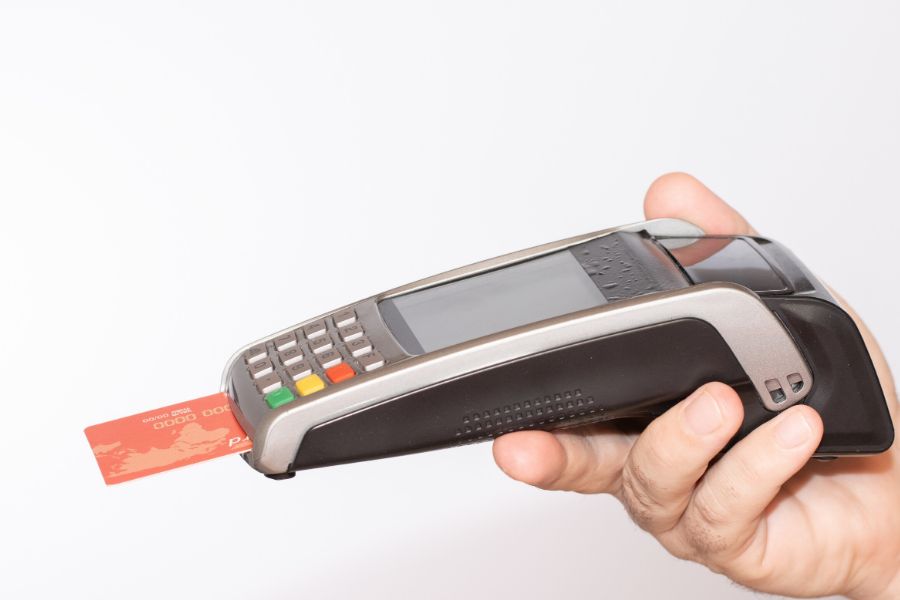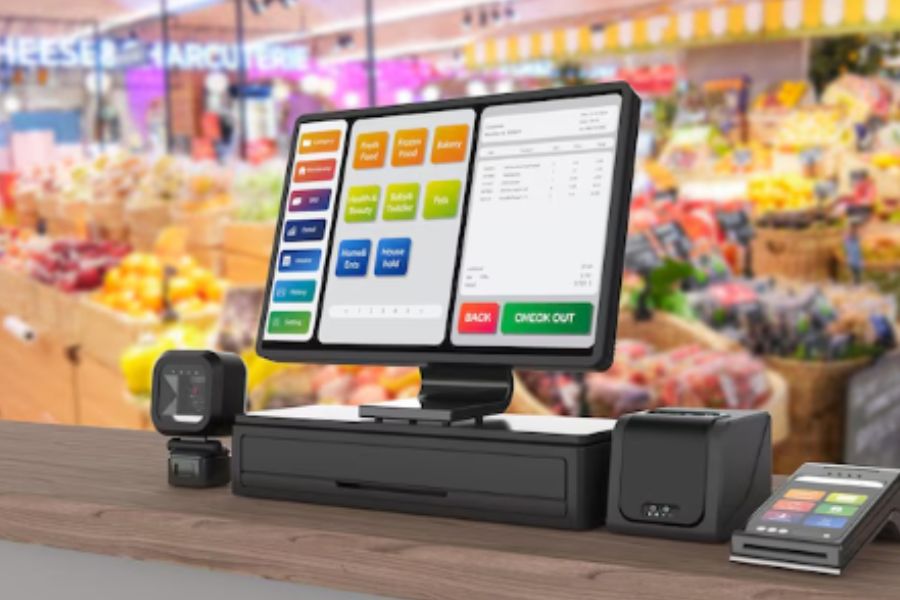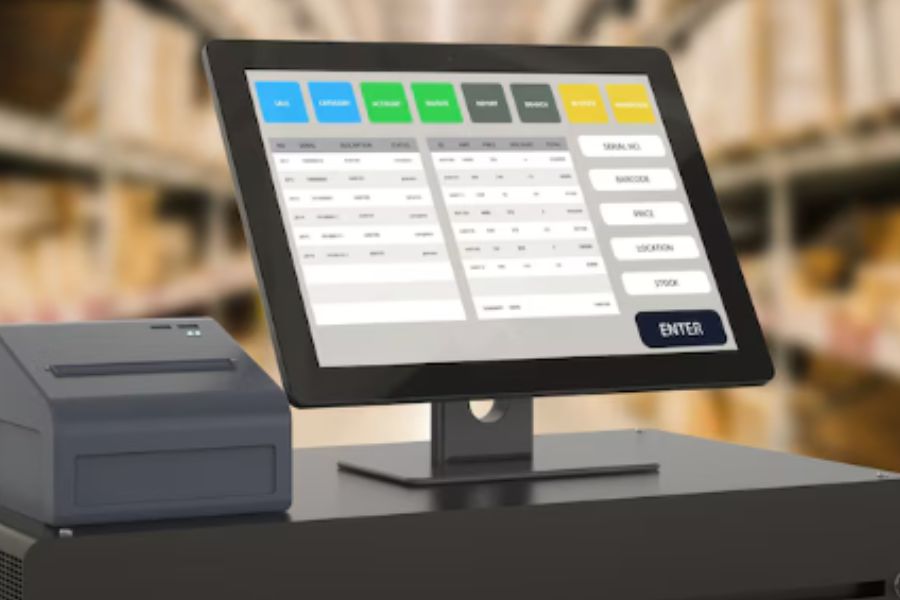Shipping labels are an important component of eCommerce logistics, but they’re not always as straightforward as they appear. If you make a mistake with your shipping labels, it may rapidly become costly, inefficient, and even prohibit goods from being delivered, regardless of the size of your business. Whether you’re just getting started with shipping labels and need some tips, or you’ve been doing it for a while and need a review, our guide to shipping labels covers everything you need to know. This blog will provide information about what a shipping label is and how to create one.
What is a shipping label?
Young Asia businesswoman manager wear face mask looking for goods using digital tablet checking inventory levels stand in retail shopping center. Distribution, Logistics, Packages ready for shipment.
Shipping labels are a kind of identifying label that helps in the description and specification of what is included inside a package. The necessary information for a carrier to carry a package from its start location (your warehouse) to its final destination (the customer’s hands) is shown on shipping labels.
Postal code, nation, tracking number, date, package weight, address, and other confirmations are all important pieces of information. The content of shipping labels should also be specified, especially if they are for overseas products. In addition, labels also provide information about the delivery type (e.g., Express, Standard, etc.) enabling the carrier to guarantee that the service for which the customer paid is given.
But why is a shipping label important? Humans and machines both use these labels to figure out where your item originated from, where it has to go, and what stops it may have made along the route. Moreover, packages can be delayed in transit, sent to the wrong location, or lost entirely without a proper shipping label.
Any of these circumstances might result in a financial loss or decreased consumer loyalty. For these reasons, a shipping label is highly important not only for the consumers but also for businesses.
How to create a shipping label?
Here are the 2 popular ways to create a shipping label:
Through a carrier
Using your carrier’s web services, you can manually produce a shipping label. It’s not the fastest option, but if you’re delivering a small number of items, it should be sufficient. All you need to do is to go to the carrier’s website, fill out the shipping label template, then save and print the document. Some dominant carrier sites where you can do this include DHL, FedEx, UPS, eBay Shipping, etc.
Through a shipping label software
Retailers can find some shipping label software options that simply integrate with your eCommerce platforms, such as Shopify, BigCommerce or Magento. Some use a pay-as-you-go approach, which is excellent for small-to-medium volume businesses. Meanwhile, others use monthly fee-based models, which are ideal for high-volume eCommerce retailers.
You can use this option to download a carrier’s shipping label template and fill it out on your computer. This will also enable you to personalize the procedure, including the option to automate it and work offline.
For example, Magento 2 provides its users with several methods to create shipping labels, including:
- Using a third-party sticker label software, such as Avery, OpenOffice, etc. (usually comes with one-time payment)
- Using automated shipping label tools (usually comes with a monthly fee)
- Using Magento and Magento 2 backend (could charge an additional fee, depending on the service providers you choose)
Meanwhile, Shopify provides a free shipping label template where users can add information. You can fill in the relevant fields and print a shipping label right away, then simply print it on sticker paper and put it on your package. The Shopify shipping label template has a professional design with all of the required information for neat and consistent shipping labels. This option is simple and affordable for companies with a small number of orders.
BigCommerce, another major eCommerce platform, also provides some options:
- Endicia’s USPS service allows you to offer storefront quotations and print USPS shipping labels.
- Third-party label printing programs, such as ShipStation and Easyship, are also supported.
Apart from them, BigCommerce also allows merchants to manually fulfill orders (if they wish) with their own label/postage printing solution.
Besides, some POS systems on the major eCommerce platforms have functions that support the preparation for deliveries, such as saving addresses, types of shipments, processing costs, etc. If you are interested in this supplement, you can consider ConnectPOS, a leading point of sale provider with powerful shipping functions.
Tips to create an informative shipping label
Now that you know some popular ways to create a shipping label, here are some useful tips to take full advantage of this process:
Add special instructions
Make a note on the packaging if the contents of your item require specific instructions. Labeling it “Fragile,” “Perishable,” or “Flammable” is one option, although this is also often asked for by carriers. In addition, you might also want to keep track of whether or not a package has to be “This Side Up.” Taking note of these particular criteria will guarantee that your item will come in good condition at your customer’s doorstep.
Place labels on the right area
At all times, labels should be placed on the top of your box (particularly if the instructions state “This Side Up”). Make sure the label is entirely visible and that no edges are folded over, as this might hide essential information or makes it unreadable. Moreover, you should make sure any lumps are flattened after putting them down, as this might render the codes illegible. If you want to preserve your label using clear tape or a plastic wallet, don’t forget to double-check whether or not the entire label is legible.
Include packing slips
Packing slips, often known as “waybills,” are always included in the shipping label by any professional eCommerce merchant. This acts as a receipt and is put inside the package (or outside, in a plastic bag). The important information, such as:
- Your company’s contact information
- The client’s address
- The order date
- The products contained in the box and their quantities
- Customer service number
- Any extra remarks or information concerning returns, refunds, etc.
… should all be included on the slips. Having an informative shipping label will make the delivery process more transparent for customers, thus improving their trust in your company brand.
Conclusion
How to create a shipping label appropriately is often overlooked, however, we hope that this blog has provided you with some useful information. Are you interested in more eCommerce solutions, such as a point of sale system? Talk to us today about how ConnectPOS can help your eCommerce business achieve success!



